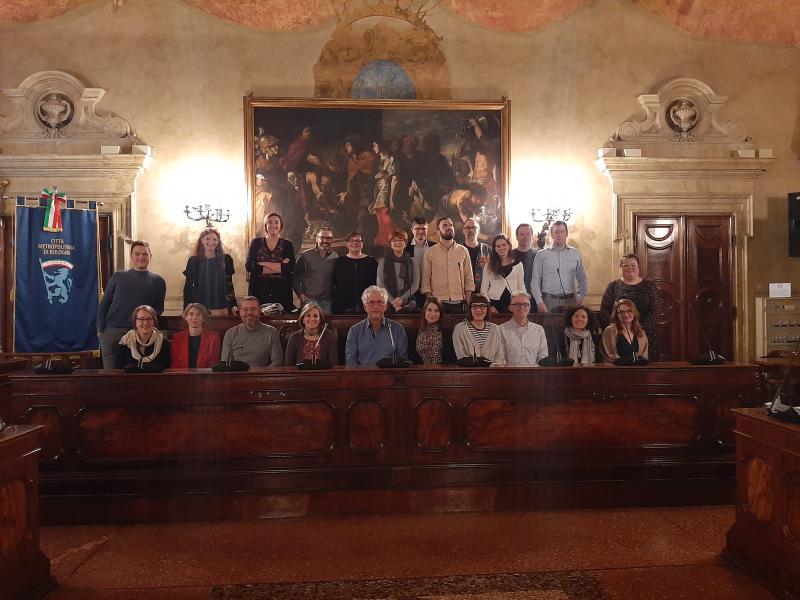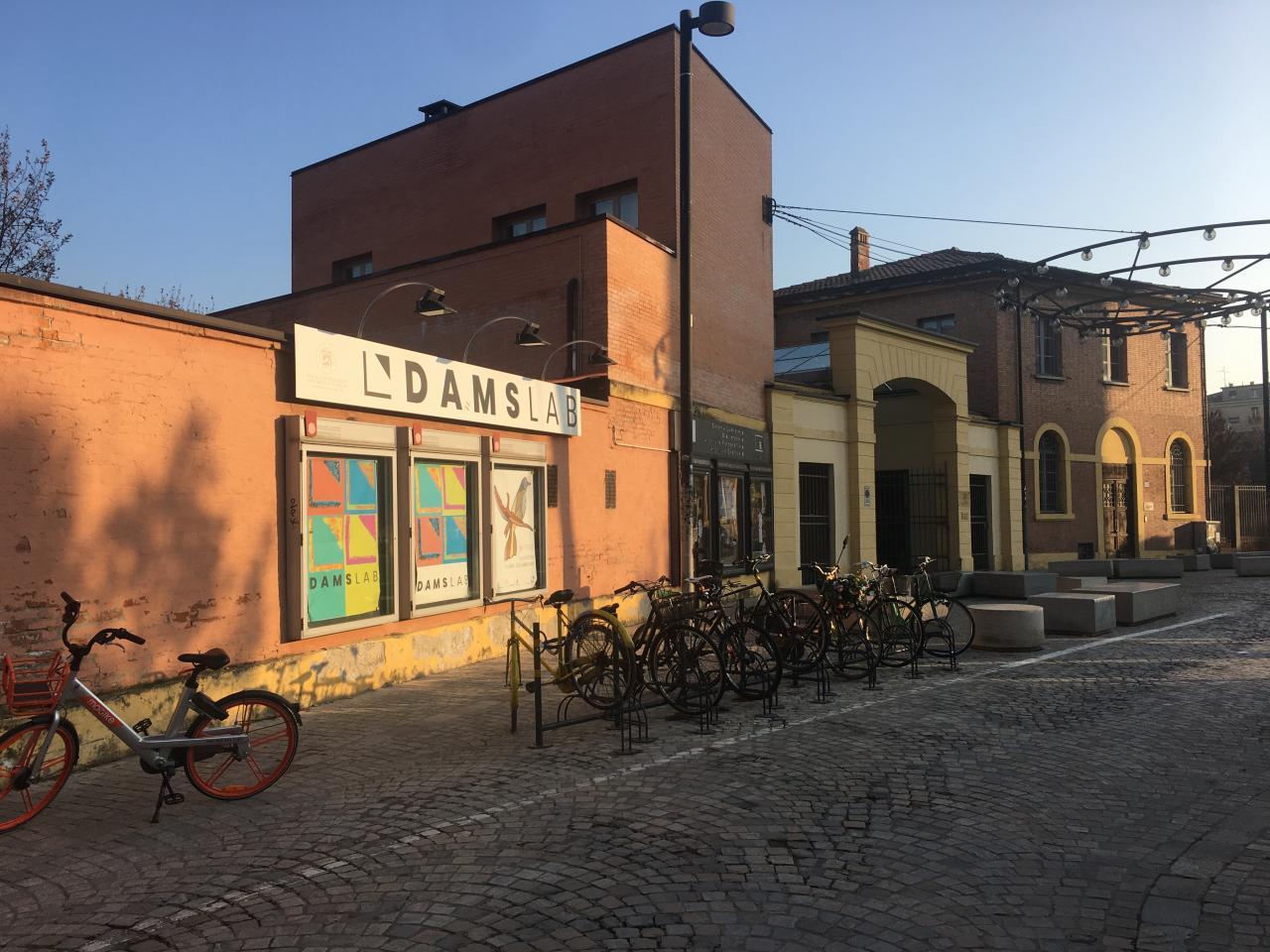
5th Transnational Network Meeting was dedicated to the issue of how to involve the inhabitants, the local community in the life of the nearest area, the neighbourhood through the broadly understood culture and all kinds of cultural events. It was also the time of our Midterm revive meeting.
The The first day of the 5TNm began with a welcome speech from Mr. Giuseppe De Biasi, Head of Cabinet of the Metropolitan City of Bologna who stressed the importance of multi-level governance, participatory decision making as well as culture and cultural heritage potential in urban regeneration. Mr. Marino Cavallo, Head of Research, Innovation and European Project Service, added that culture driven urban regeneration and inclusive measures aimed at safeguarding the socio-economic diversity of the renovated neighbourhoods. Mr. Simone D’Antonio (from National Point URBACT Italy, Anci) was talking about Bologna as one of the most interesting examples of regeneration. It started a network of cities collaborating with residences and stakeholders. 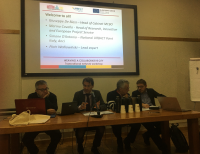
After the welcome speeches there was also time for a very interesting integration exercise, which was about being split into pairs and having to communicate with each other without using specific words, but instead only gestures, facial expressions and one chosen sound such as la-la-la or mi-mi-mi. This exercise was a very good introduction to the whole day, with a lot of laughter and good energy, and it also showed us how important communication is.
DAMSLab – out of the box cultural approach: the challenge “Porto Culture as a pathway towards
Prof. Roberta Paltrinieri and a researcher Giulia Allegrini presented the DAMSLab (Centre of Arts, Music and Theatre), regenerated place hosting our meeting which used to be a slaughterhouse and now as an urban regeneration project might capitalize as a practice space from the URM network. DAMSLab is a laboratory aimed at promoting culture at an urban level which is opening to the local community. Designed and managed by the University of Bologna, DAMSlab’s goal is to enhance projects and foster synergies that find in cultural and artistic production and participation the key factor for territorial growth.
Presentation of the Bologna cultural area
In the early afternoon members of the Bologna ULG representing numerous institutions, associations, organizations working together in the DAMSLab gave us an overview of activities they undertake in the Bologna cultural area, eg.:
- ArchInProcess exhibition inspired by the history of the place, where the DAMLab operates nowadays, run by students of Arts Department, University of Bologna,
- Farmer’s Market in front of a Cinema (Mercato Ritrovato) lead by an Association of local farmers where culture and food intersect (every Saturday morning about 50 producers offer their products, „fruits of their work” - selection by Slow Food guidelines
- „Museomix in Italy” an annual 3day event organized by local community museum passionates promoting professional exchange for local museums, cultural institutions, creative professionals, civic associations, IT companies who meet museum staff for „a creative makeathon”
- „Cosisara” - 18-month project for young citizens aged 11-25 involved in a performative project and creative processes with the aim of founding a new „ideal city”, „the city we want”
- Both initiatives started and coordinated by BAM! A local Organization run by a team of designers specializing in cultural marketing
- Gender Bender an international festival on the new imagery related to gender identities, sexual orientations and bodies representations in contemporary arts and cultures held by Il Cassero LGBTI Centre, promoting social solidarity and offering social and educational services and running various information campaigns,
- DAS (Experimental Arts Device) an NGO of art passionates, professionals and freelancers running numerous projects and initiatives with local community esp. young people with the use of experimental art.

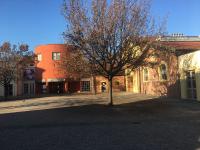
Short visit of the DAMSLab area
Having a background knowledge about DAMSLab, the place of the meeting, organizations and associations working there and their projects and initiatives, participants of the 5TNM had a walking tour around the whole area during which they were shown some of the NGOs premises.
The presentations and a study tour were followed by a discussion around a couple of challenges identified in the area by the Bologna team: co-construction and collaboration between cultural institutions and opening up to inhabitants through co-construction.


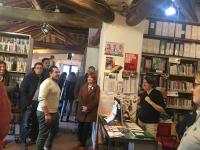
Co-construction workshop on the Bologna Challenges with the partner cities and the members of the Bologna ULG
Open discussion was followed by a workshop. Having been divided into groups we tried to suggest solutions to challenges identified. There is the so called 3rd mission of the University of Bologna whose aim is to enter the dialogue with the community (now still very formal) in a sense social responsibility of the university. During the dscussion many interesting and important voices have emerged on the issue of the involvement of university culture and society in the process of revitalization and social integration, in social dialogue:
- Braga reaction: impressed by the LGBTI initiative, as a catalyst of dialogue nowadays in the public sphere, important for social inclusion.
- Birmingham Sam: capitalizing on the cultural capital Bologna has. Who is being connected outside the community? If you are a resident from the area, family (not a student) do you know about the area?
- Bologna: They do know but there is a strong debate, sometimes it is hard to combine two visions of the city. Richness of Bologna is 80 thousand students in the city. Continuity of local power.
- Toulouse: 100 thousand students but no similar participation culture observed there. Where does it come from? Who creates participation: students or the city?
- Bologna: both, Bologna known for cultural openness, civic engagement in general (national stereotype).
- Birmingham Karolina: Who is culture for? How can we open culture to people who are not naturally prone to culture, who wouldn’t go to a gallery or theatre? If we use culture as a tool for regeneration who do we target and how do we apply it? When diverse societies (many ethnic and racial groups, richer and poorer) it’s difficult - white culture. How to obtain social mix?
- Bologna: culture is more than typical, traditional examples, people create culture also alternative eg. music. You don’t tell people what to do with culture but allow them to grow autonomously. Food, ethnic food and socializing around it is also an example of culture.
Mid-term reflexion
Most of the second day we spent on MTR meeting of our network. It was led by Eddy Adams, the representative of the URBACT Secretariat, who has been extremely energetic and impressing everyone with his positive energy. We started the meeting with a general look at our 
Laboratory of participative theatre – a creative approach to inclusion (regeneration) policies
In the late afternoon, the participants of our meeting took part in an extraordinary workshop organized by Cantieri Meticci theatre company (Art association), which is currently running the project The Laboratory of partecipative theatre "Atlas of fears", which operates in the DamsLab and is part of the Porto Culture idea tested within the URM network. As part of the URM project, the Metropolitan City of Bologna supports the activities of Cantieri Meticci and with them tessuth and tests how such laboratories dealing with cultural and creative professions and cultural citizenship can function. In these activities, the aim of the transfer is the methodology of promotion and support of cultural activities that may have a significant impact on local communities, which is a reference to the Good Practice of the City of Łódź, which is based on intensive relations with the inhabitants of various social circles, including people threatened by social exclusion. The members of our network turned into actors for this afternoon, and they could see for themselves how an interactive form of tether can influence on people.
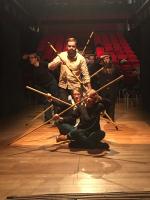

In the evening, at the invitation of the Cantieri Meticci participants of the meeting, took part in a spectacle prepared in the framework of The Laboratory of partecipative theatre "Atlas of fears" - The Nigger of the Narcissus. It was an incredible experience in which the audience did not sit in the audience but were part of the play and spent most of their time with the actors on stage.
Summig up
On the third and final day of 5th Transnational Network Meeting in Bologna we wrap-up the role of the culture in the regeneration process and the opportunities it offers in terms of building and consolidating the local community. We also we also summarized our work during Mid-Term Reflection Meeting. We all agreed that this was a much needed moment, during which we looked at our transfer from outside and saw exactly where we are in the process.
